Ever heard of muscle cars?
They might not be as hot on the streets today, buried under minivans, trucks, SUVs, and crossovers, but this type of car was all the rage in the 1960s and 1970s!
A classic muscle car was an American-made, high-performance vehicle that combined a powerful engine, usually a V8, with a lightweight mid-sized coupe body.
It was popular among road racers and was known for its impressive straight-line speed and acceleration. These cars were surely designed for those who valued both style and performance.
When did the muscle car era begin, though?
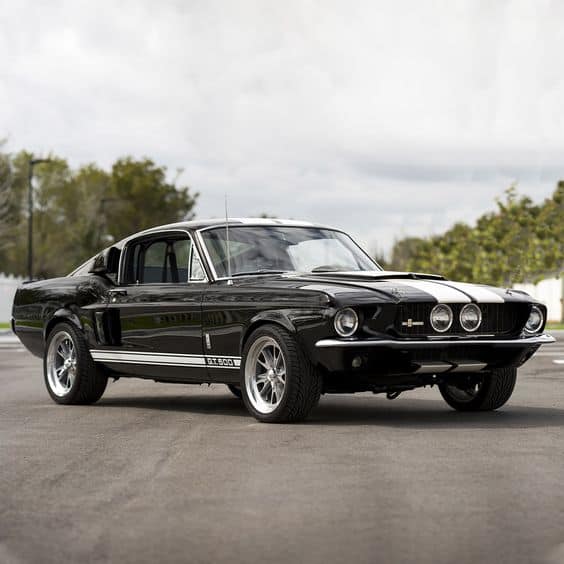
Source: @barrett_jackson / Pinterest
Easy question. It began in the 1960s, and was considered the golden age for American muscle cars. During this time, American automakers experimented with powerful engines in mid-sized cars, which left an indelible mark on the American automotive industry – till this day!
For instance, the iconic 1964 Pontiac GTO is widely considered the first American muscle car, but we’ll get into that later.
Muscle cars, with their unmatched speed, raw power, and distinctive styling (which made them kind of special), have always stood out in the automotive world. Their aggressive designs, robust engines, and special performance packages also make them a breed apart.
If you’re a speed enthusiast, a lover of thrilling driving experiences, or simply intrigued by the allure of these legendary cars, come along with me as we delve into their rich history and evolution!
Key Takeaway
- Muscle cars, originating in the 1960s, were high-performance American-made vehicles that combined powerful engines with lightweight mid-sized coupe bodies. The Pontiac GTO is widely considered the first modern muscle car.
- The muscle car era was characterized by intense rivalry among American automakers, producing iconic models like the Ford Mustang, Chevrolet Camaro, Dodge Charger, and Plymouth Road Runner.
- Muscle cars significantly impacted American culture, representing ideals of individualism, adventure, and community, and were prominently featured in various forms of media, such as movies, music, and television.
The Birth of the First Muscle Car
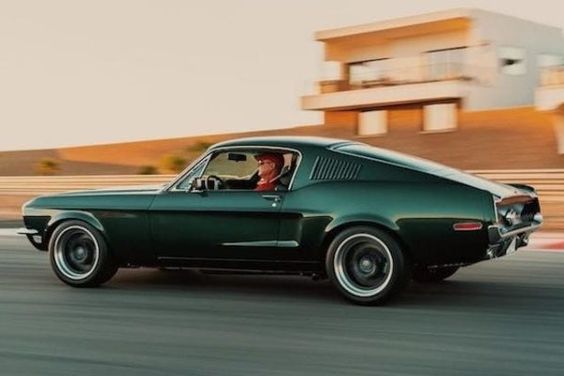
Source: @revologycars / Pinterest
The very first muscle car? That’s like asking who invented the first slice of pizza!
But let’s say that the Pontiac GTO was widely recognized as the vehicle igniting modern muscle car movement.
It was first introduced as an optional package for the Pontiac Tempest in 1964. The car combined high-performance features with a lightweight mid-sized body and quickly became a blueprint for the muscle car industry.
The original GTO featured a 389-cubic-inch V8 engine, which produced up to 348 horsepower in its tri-power carburetor configuration. This powerful engine provided the car with exceptional speed and acceleration. It featured the mid-sized A-body platform, which provided a lighter and more agile vehicle. The combination of power and the lightweight body was a key to the car’s appeal.
With its powerful engine and lightweight, the GTO offered high performance – it could accelerate from 0 to 60 miles per hour in around 6.6 seconds, which was very fast back then!
Many of the advancements and performances developed during this period influenced the design of later well-known cars, including modern sports cars and high-performance vehicles that we see on screen today.
The Rise of the Muscle Car Era
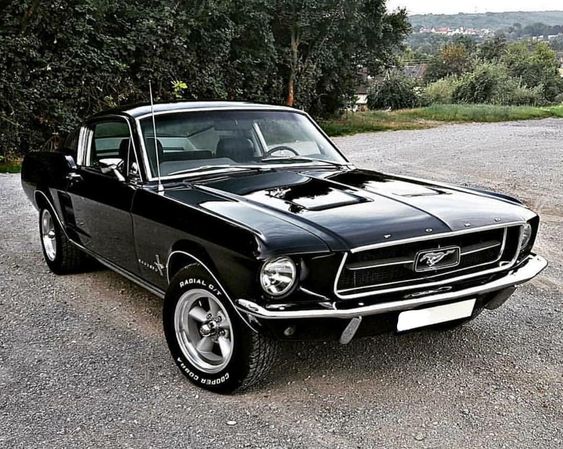
Source: @npdlink / Pinterest
Since their release, muscle cars have become essential to American automotive culture. Enthusiasts loved modifying them to improve their performance, and street racing with these powerful cars became a popular activity, further enhancing their legendary status.
Several impressive muscle cars were made during this era. The iconic Ford Mustang was introduced in 1964. Typically, Mustangs had smaller and more efficient engines than Pontiac GTOs. The Mustang also featured a V8 engine and offered a sporty and stylish choice.
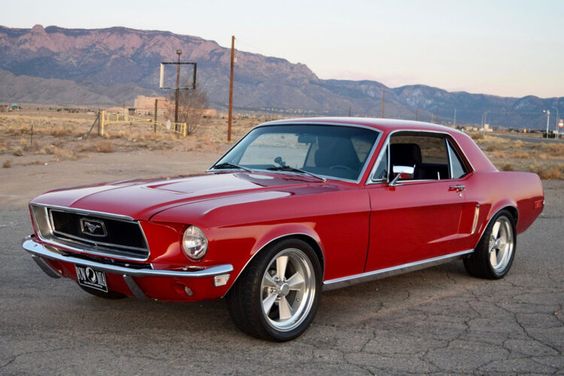
Source: @stangbangers / Pinterest
The Chevrolet Camaro was introduced in 1966 as Chevy’s answer to the Ford Mustang – a total muscle car package.
The car quickly became popular due to its aggressive styling, performance, and high engine power. While it has undergone several redesigns over the years, the Camaro remains a favorite among muscle car enthusiasts.

Source: @classiccarscom / Pinterest
The Dodge Charger is also a significant model in muscle car history. Introduced in 1966, it became an icon of the muscle car trend. It had a distinctive look and boasted the most advanced technology of its time.
The innovation of combining American muscle cars with a stunning design was something else!

Source: @classicnation / Pinterest
The Plymouth Road Runner was introduced in 1968, known for its simple, yet powerful design. Named after the famous Looney Tunes cartoon character, it aimed to offer enthusiasts a straightforward, high-performance vehicle at an affordable price.

Source: @barrett_jackson / Pinterest
So, which one caught your gaze?
Muscle Car Wars
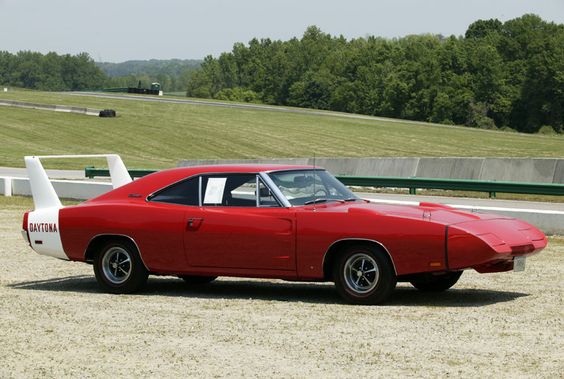
Source: @popmech / Pinterest
During the 1960s and 1970s, muscle car wars started.
The aim was to create the most powerful and attractive muscle cars. The Muscle Car Wars were characterized by intense rivalry between the major American car muscle car manufacturers.
They introduced numerous new models with powerful engines, bold styling, and high-performance features. A V8 engine provided exceptional acceleration and high top speeds. Although they were primarily designed for straight-line speed, American vehicle manufacturers began to improve suspension and handling characteristics over time to enhance cornering abilities.
Muscle cars were for the ones who saw life as a race track.
Therefore, they often organized drag racing on the streets and at official tracks.
Racing events, along with car shows and cruise-ins, became a central part of the muscle car culture. These events gave most car enthusiasts a sense of community.
The Cultural Significance of Muscle Cars
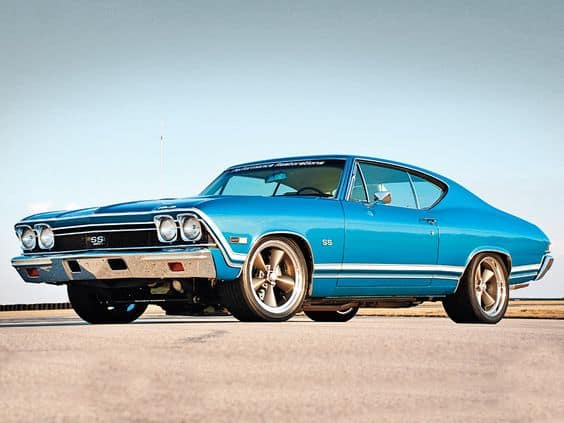
Source: @motortrend / Pinterest
I’ve said it once, but I’ll say it again, with pleasure—iconic muscle cars have always represented American innovation and power.
They were a symbol of freedom, strength, and community, and they were popularized in various pop culture media, such as movies, music, and television shows. These cars reflect American ideals, like individualism and the desire for adventure.
Muscle cars have appeared in many films and TV shows.
One of the most famous car chase scenes in history featured a Ford Mustang Fastback chasing a black Dodge Charger in the movie “Bullitt.” “Vanishing Point” features a 1970 Dodge Challenger and is often associated with 1960s-style muscle cars.
“American Graffiti” showcases iconic muscle cars, such as a 1932 Ford Coupe and a 1955 Chevrolet, that evoke the spirit of the era.
Numerous well-known songs have glorified various muscle cars, such as “Mustang Sally“ by Wilson Pickett, “Little GTO” by Ronny and the Daytonas, and “Shut Down” by the Beach Boys.
If you’ve got a minute to spare, why not listen to these hits and scroll through?
Muscle Car Owners and Their Communities
In the past, owners of muscle cars used to come together as a close and supportive community, sharing a common love for these high-performance vehicles.
They attended car shows, organized meetups, participated in various events, and put a lot of effort into personalizing and restoring their muscle cars to enhance their performance, appearance, and originality.
Sometimes, they would gather in informal groups or clubs to share stories, experiences, and knowledge. These gatherings often took place in parking lots, diners, or local dragstrips. To experience and show their cars’ power, muscle car owners often organized cruising. Cruises provided a social outlet and a chance for enthusiasts to show off their cars.
People who owned muscle cars often had a great attachment to particular brands or models, including Chevrolet’s Camaro and Chevelle, Ford’s Mustang and Torino, or Dodge’s Charger and Challenger.
This attachment sometimes resulted in friendly competitions between different groups!
The Evolution of Muscle Cars
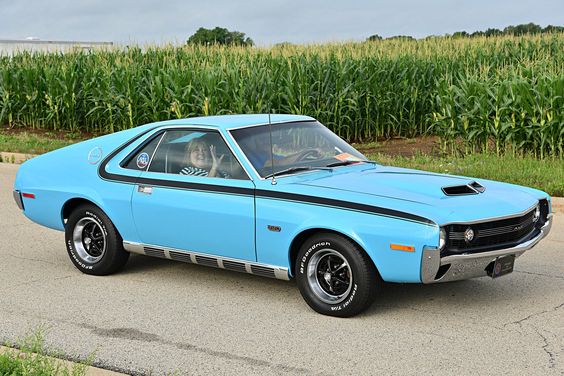
Source: @motortrend / Pinterest
Impressive muscle cars produced during the 1960s and 1970s benefited from significant advancements in both design and technology.
As I’ve mentioned, many of these cars featured powerful V8 engines with high compression ratios and overhead valves. The higher compression engines, with their increased compression ratios, were a testament to the ingenuity of the era.
Although more common in modern muscle cars, some models in that era explored superchargers and turbochargers to boost engine power even further.
Advancements in ignition systems, such as electronic ignition, and improved fuel delivery systems, like high-flow fuel pumps, enhanced engine performance and reliability.
These high-performance muscle cars were not just about power, and they were also about safety.
With their stiffer settings, the upgraded shock absorbers and springs offered improved response and less body movement during aggressive driving.
Moreover, the introduction of disc brakes, with their better-stopping power and heat dissipation, significantly enhanced the safety of these muscle cars, contributing to a more controlled and secure driving experience.
Famous Muscle Cars Throughout the Era
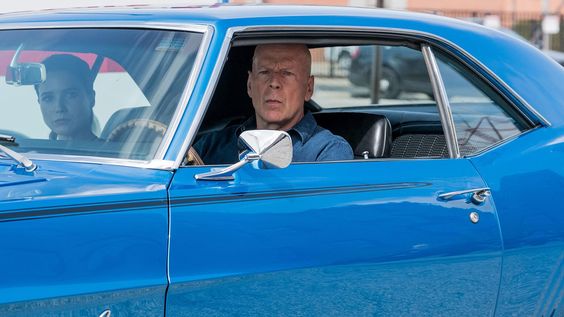
Source: @britishgq / Pinterest
The golden age of muscle cars was dominated by the top four, which stood out for their exceptional combination of style, performance, and heritage: the Chevrolet Camaro, Ford Mustang, Dodge Challenger, and Pontiac GTO. These vehicles represented the pinnacle of American muscle and continue to influence the automotive industry to this day.
The Buick Gran Sport is another impressive car that joined the market in 1965. Its luxurious features, impressive performance, and style have made it an appealing choice for a wide range of buyers.
The Oldsmobile 442 (pronounced “four-four-two”) was also legendary, to say the least.
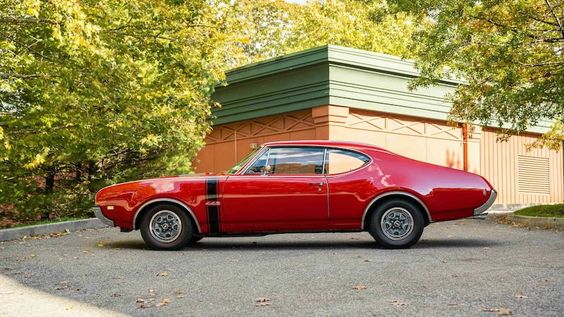
Source: @mecumauctions / Pinterest
It was produced from the 1960s through the early 1970s. The name “442” stood for the car’s key features: a four-barrel carburetor, four-speed manual transmission, and dual exhaust.
The Decline of the Muscle Car Era
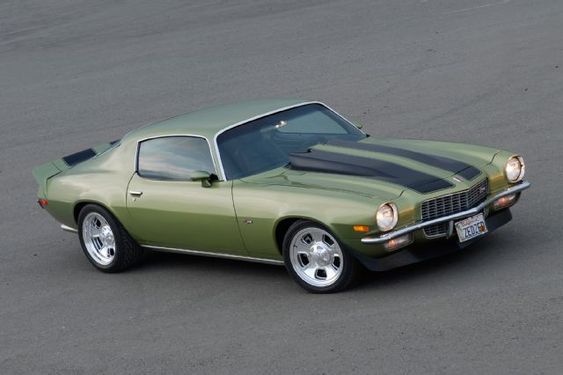
Credits: motortrend.com
I’ve had to touch upon this topic.
During the 1970s, various factors contributed to the decline of the muscle cars. First and foremost, the oil crisis that occurred during the decade resulted in rising fuel costs and shortages, making muscle cars impractical and less affordable.
Consumers simply began to prefer more economical and fuel-efficient vehicles, which decreased the demand for the muscle car category.
Also, The Clean Air Act of the 1970s and emissions regulations imposed strict limits on vehicle emissions, which meant automakers had to modify their engines and exhaust systems.
The muscle cars were impractical for their heavy weight, poor fuel efficiency, and high emissions.
Therefore, the muscle car wars fizzled as market conditions and regulatory changes took their toll. Automakers shifted their focus towards smaller, fuel-efficient vehicles from high-performance cars that previously dominated the market.
The Legacy of the First Muscle Car
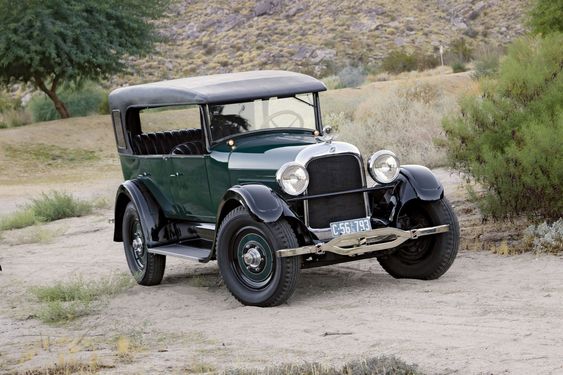
Source: hemmings.com / Pinterest
Muscle cars have significantly impacted the automotive industry. The popularity of classic muscle cars has resurged, with many enthusiasts buying them for nostalgia, appreciation, collection, restoration, and investment purposes.
Manufacturers continue to combine the timeless styling and exceptional performance of classic muscle cars with advanced technology, security features, and fuel efficiency.
Modern versions of the Ford Mustang, Chevrolet Camaro, and Dodge Challenger are specifically designed to appeal to driving enthusiasts who seek the thrill of high-performance driving combined with the comfort, convenience, and advanced technology of modern vehicles. These cars carry the legacy of classic muscle cars while embracing the 21st-century automotive industry’s advancements.
Conclusion
Muscle cars were manufactured between the mid-1960s and early 1970s. Once the Pontiac GTO was introduced to car lovers in America, other muscle car manufacturers wanted to produce them and improve their features and technology.
The profound impact of muscle cars on the American automotive industry continues to be felt even today—but if you’re a vintage car enthusiast, then you already know that. Their influence remains evident in current interpretations and retro-styled vehicles, which pay tribute to their iconic ancestors.
Nothing left for me to say, except that enthusiasts and collectors still celebrate the heritage and legacy of muscle cars, making sure that their impact will be lasting and felt for future generations.
